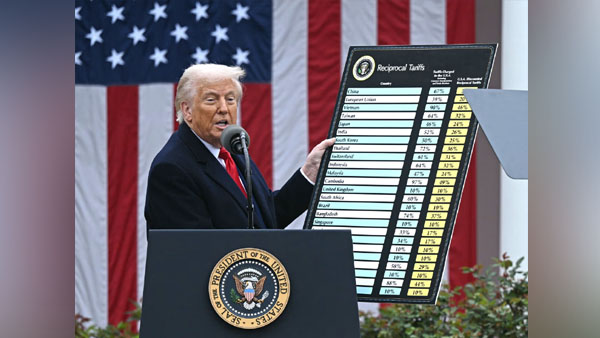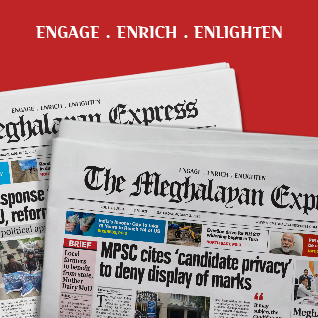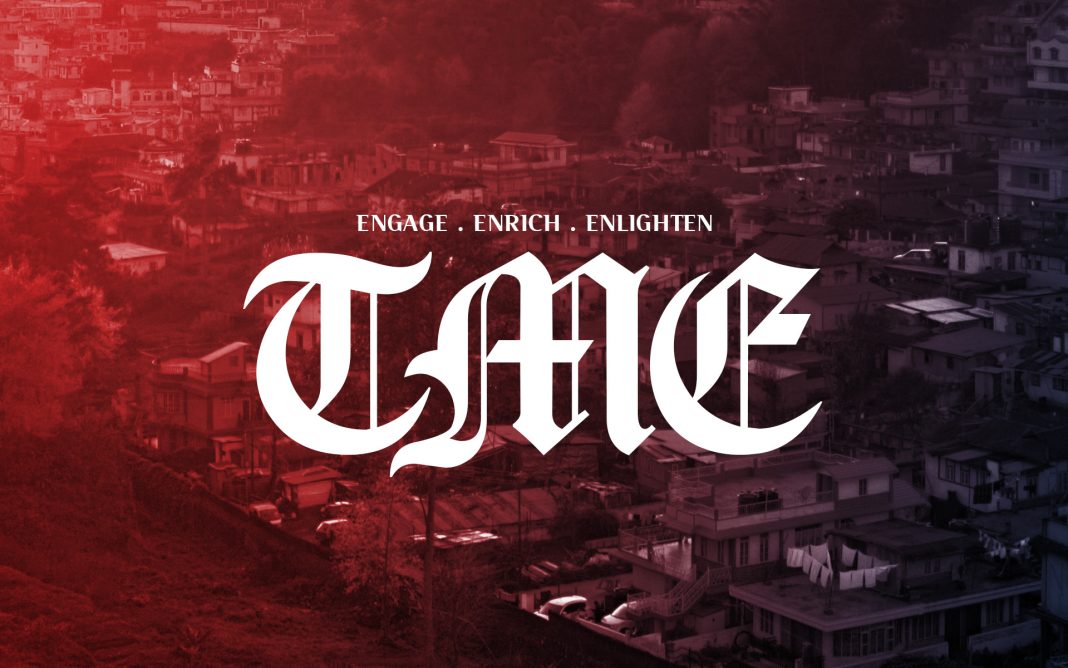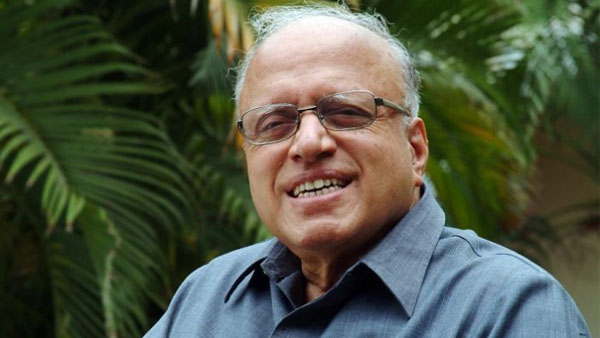By Dipak Kurmi
In the labyrinth of global politics, few spectacles are as simultaneously theatrical and consequential as the unfolding drama in Washington under President Donald Trump’s second term. It is a performance that bears traces of comedy, audacity, and menace, depending upon where one sits on the geopolitical map. His tariff experiments, his flirtations with territorial acquisitions reminiscent of earlier centuries, and his strategic confrontations on issues ranging from nuclear security to trade are shaping a new discourse. Yet beneath this flamboyance lies a deeper question—whether history, particularly the lessons of twentieth-century Europe, is being forgotten by the world’s most educated and affluent democracy.
Trump’s dance of tariffs, calculated as much for domestic applause as for international leverage, is an unmistakable reflection of his instinct to dramatize. Much like an entertainer courting the crowd, he shifts rates depending upon the mood of the White House, leaving trading partners uncertain and multilateral bodies like the World Trade Organization sidelined. The deliberate marginalization of the WTO is not merely an economic maneuver but a strategic attempt to reinforce American unilateralism in an increasingly multipolar world. That this strategy resonates with a section of the American public, tired of global entanglements and desirous of protectionist walls, underscores the paradox of twenty-first century America: a superpower tempted by isolationist reflexes.
What makes this new style even more remarkable is its brazen ambition. Within days of reclaiming the Oval Office in January 2025, Trump shocked the global community by proposing the absorption of Greenland into American territory, a demand placed directly before Denmark, a NATO ally. The echoes of nineteenth-century territorial expansionism were unmistakable, and the audacity even more so, given that such moves belong to an era of imperial bargaining rather than modern diplomacy. Hardly had the astonishment over Greenland faded when another startling request emerged—that Canada, America’s neighbor and closest partner, join the United States as its fifty-first state. The suggestion may have been fanciful, but the mere articulation of such an idea signaled a mindset profoundly at odds with the norms of international relations.
The historical resonance cannot be ignored. When Adolf Hitler consolidated Germany’s territorial ambitions, it was not merely brute force but psychological intimidation that secured his gains. Czechoslovakia’s Prime Minister Emile Hacha was browbeaten into surrender, only to end his life soon after in despair. Austria’s incorporation through Anschluss and the forcible absorption of Sudetenland—with the acquiescence of Britain and France—proved how easily democracy could capitulate in the name of preserving peace. Trump’s demands, though not backed by tanks or stormtroopers, bear an uncomfortable similarity in their disregard for sovereignty and their assumption of inevitability. The fact that such demands can be voiced in the twenty-first century by a leader of the world’s foremost democracy demonstrates how history often returns in disguised forms.
To gild his presidency’s symbolic crown, Trump has not shied from extravagant gestures. A luxury aircraft, presented as a form of diplomatic dowry from Qatar, has become an emblem of this new American style—where spectacle often substitutes for substance. The reliance on optics over policy depth is not new in politics, but its systematic use as a governing method by a superpower has implications that reach far beyond American borders. For allies, it raises questions about consistency; for adversaries, it provides openings to exploit unpredictability.
The German analogy becomes even more pertinent when one recalls how an educated and technologically advanced society surrendered to the charisma of a leader who had risen from a mere corporal in the trenches of the First World War. The intoxicating appeal of continuous success blinded even seasoned military commanders to the fragility of their victories. America, with its proud tradition of democratic checks and balances, is not Weimar Germany, yet the lesson is plain: success, when coupled with unchecked nationalism, can create illusions that collapse under the weight of reality. Trump’s second term may be basking in the adrenaline of novelty, but as history shows, intoxication wanes with the onset of failure.
The risks are not confined to trade or diplomacy. The recent conflict between Israel and Iran underscored how America’s choices reverberate dangerously. When U.S. bombers targeted Iranian nuclear facilities, the question that haunted Tehran was simple yet chilling: what would Washington do if Iran retaliated in a manner that caused American casualties? The specter of nuclear escalation hovers in the background, reminding the world that the United States, the only power to have deployed atomic weapons in war, carries an added responsibility to temper ambition with restraint. Unlike Pakistan or North Korea, whose reckless behavior the world grudgingly tolerates, America cannot afford to erode the trust that underpins its leadership.
It is worth recalling Franklin Delano Roosevelt’s conduct during the Second World War—a presidency defined not by erratic stunts but by a careful calibration of strength and empathy. Roosevelt projected stability at a moment when global chaos demanded it. For Trump, whose instincts push toward confrontation and unpredictability, this model of leadership offers a striking contrast. The American presidency is not merely a domestic role but an international trust, one that demands consistency across decades and even centuries. Punitive tariffs or provocative rhetoric may satisfy a constituency at home, but their ripple effects can undermine confidence abroad.
India presents a particularly delicate case in this matrix. For years, Trump lavished praise on Prime Minister Narendra Modi, seeing in him both a personal ally and a partner in the Indo-Pacific balance of power. Yet tariff threats against Indian exports raise a troubling contradiction. In sheer volume, India’s trade with the United States is smaller compared to giants like China or the European Union. The gains from penalizing India are modest, yet the risks to bilateral goodwill are immense. In dismissing this balance, Trump risks throwing away the symbolic and strategic capital built over years.
Moreover, the context of India’s economic rise cannot be ignored. No longer the tentative economy of Nehru or Indira Gandhi’s era, India today ranks as the fourth-largest economy in the world and contributes nearly 18 percent to global economic growth annually, outpacing the United States, which stands at 11 percent. This statistical reality is more than a number; it is a marker of shifting global currents. An America that seeks to alienate such a partner risks not only material losses but also strategic isolation.
The lessons are stark. First, sobriety must be the soul of responsibility for a nation that manages the dollar, the world’s reserve currency. Second, consistency is not optional for a power that aspires to command faith across generations. Third, in a nuclear world, where most nations remain non-nuclear, the responsibility of the United States is to reassure, not to alarm. Deviations from these fundamentals may gratify a momentary audience but will erode the architecture of trust that sustains American primacy.
Ultimately, Trump’s new style—whether in tariffs, territorial aspirations, or diplomatic theatrics—may dazzle for a time, much as Hitler’s victories dazzled his generals. But the intoxication of novelty cannot substitute for the endurance of trust. America, with its Anglo-Saxon temperament, its democratic tradition, and its global responsibilities, cannot afford to imitate the failures of Europe’s darkest decades. The choice before it is stark: to remain the world’s beacon of stability, or to gamble away credibility in pursuit of applause.
The tariff waltz, then, is more than economic choreography. It is a test of whether the United States can balance power with restraint, ambition with memory, spectacle with substance. In the end, the fate of Trump’s experiment will not only define his presidency but will also shape the trajectory of a world still struggling to reconcile its past with its future.
(the writer can be reached at dipakkurmiglpltd@gmail.com)




